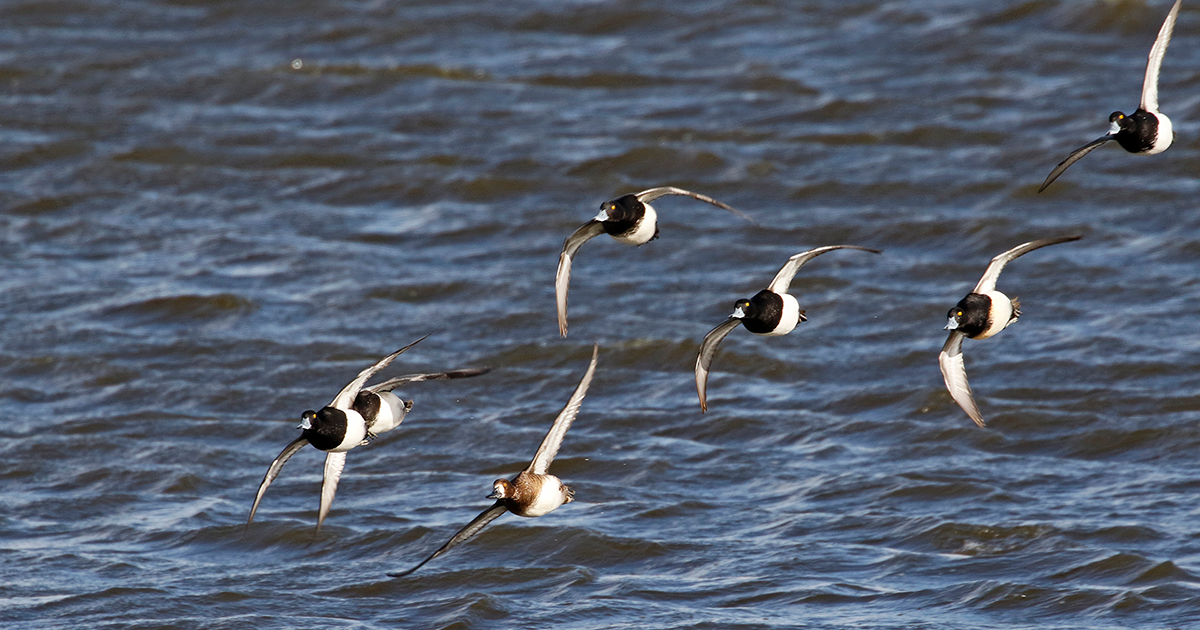Migration Alert: Mid-Atlantic Waterfowl Hunters Hoping for Late-Season Cold
Jan. 9, 2024 – Atlantic Flyway – Chesapeake Bay
Jan. 9, 2024 – Atlantic Flyway – Chesapeake Bay

A dearth of ducks from the top of Chesapeake Bay to the Outer Banks of North Carolina has waterfowlers wondering if this might be a year where their ammunition supplies see little attrition. Winter squalls and brief appearances of nasty weather, such as the storm hammering the Mid-Atlantic and northeast this week, might result in a push of migrating ducks and geese.
Josh Homyack, Maryland Department of Natural Resources waterfowl project manager, is taking the long view relative to habitat. "We've gotten some water so we can't say its dry anymore," he says. "But honestly, I'll take all the rain we can get after the past two years of dry conditions. However, from a hunting perspective, it would be nice to see some colder weather and see some ice."
Homyack reports that Canada goose numbers are solid on the Eastern Shore. Puddle ducks are around, but the birds are hanging out in secluded places now that the water situation has improved. Typically, it takes freezing temperatures to get those birds on the move.
"There are some divers, mostly scaup, but they seem very spread out, and it may take some scouting to find them," Homyack adds. "I haven't seen or heard of many snow geese around—just a few small flocks here and there."
Ed Farley, DU manager of conservation programs in the region, has been traveling the Chesapeake watershed into North Carolina. "In mid-December, there were good numbers of scaup on the Susquehanna Flats," Farley says. "I was back home hunting in eastern North Carolina for Christmas, and it seemed like teal were starting to move around more."
The Chesapeake Bay Bridge Tunnel gives motorists a good look at a lot of water. Farley reports seeing the fewest scoters and buffleheads that he can recall during his crossing of the bay last week. "If the weather doesn't change, this could end up being a very poor season for divers overall," Farley says.
Marcia Pradines Long, leader of the Chesapeake Marshlands National Wildlife Refuge Complex with the US Fish and Wildlife Service (USFWS), reports that the mid-December waterfowl count on the complex numbered about 20,000 birds, 15,000 of which were Canada geese. Only 2,000 mallards and 2,300 pintails were surveyed. "Since then, those numbers have decreased," Pradines Long says, "although tundra swans and shovelers have increased. A few snow geese are around, hanging out on the river during the day, but they haven't been captured during the counts. Hunter reports aren't good."
Virginia Department of Wildlife Resources waterfowl biologist Ben Lewis recently surveyed tidal areas of the state from the air, mainly looking for tundra swans. He reports that puddle ducks were generally sparse, although the Rappahannock River had a "fair" number of ducks and geese.
"When the temperatures in the Great Lakes, the Finger Lakes and the St. Lawrence River are as mild as they are in Virginia, we are not going to get the duck migration we hope for," Lewis says. "I do think we have good numbers of geese around, considering the mild temperatures north of us, and I think a few hunters are having some success with ducks. I have seen good numbers of scoters and long-tailed ducks out in the bay, although I am not sure how many hunters have been chasing them."
On Hog Island Wildlife Management Area, a bellwether for Virginia waterfowl numbers, manager John Randolph reports, "Our duck numbers as well as our Canada goose numbers are lower than earlier in the season." Randolph adds that hunters participating in the area's quota hunts still have had some good shooting.
Moving south, Doug Howell, migratory game bird coordinator for the North Carolina Wildlife Resources Commission, declares, "We are in the duck doldrums. We have good numbers of tundra swans, but the duck migration has slowed to a snail's pace. Hunters seem to be doing okay with wood ducks, but harvest of other species is low by all reports. The recent rains are certainly helpful, as many of our state managed impoundments have been bone dry, but we need colder weather to the north."
USFWS biologist Brian Van Druten says that between 5,000 and 10,000 redheads are congregating on Pea Island NWR's refuge impoundments, depending on the weather, with much smaller numbers of scaup, buffleheads, and ruddy ducks.
At Alligator River NWR, about 6,000 ducks are concentrated in two impoundments, he adds. Most are pintails with a mix of green-winged teal, gadwalls, shovelers, and black ducks. Tundra swan numbers are at or slightly above average.
Stay up to date with the latest migration information.